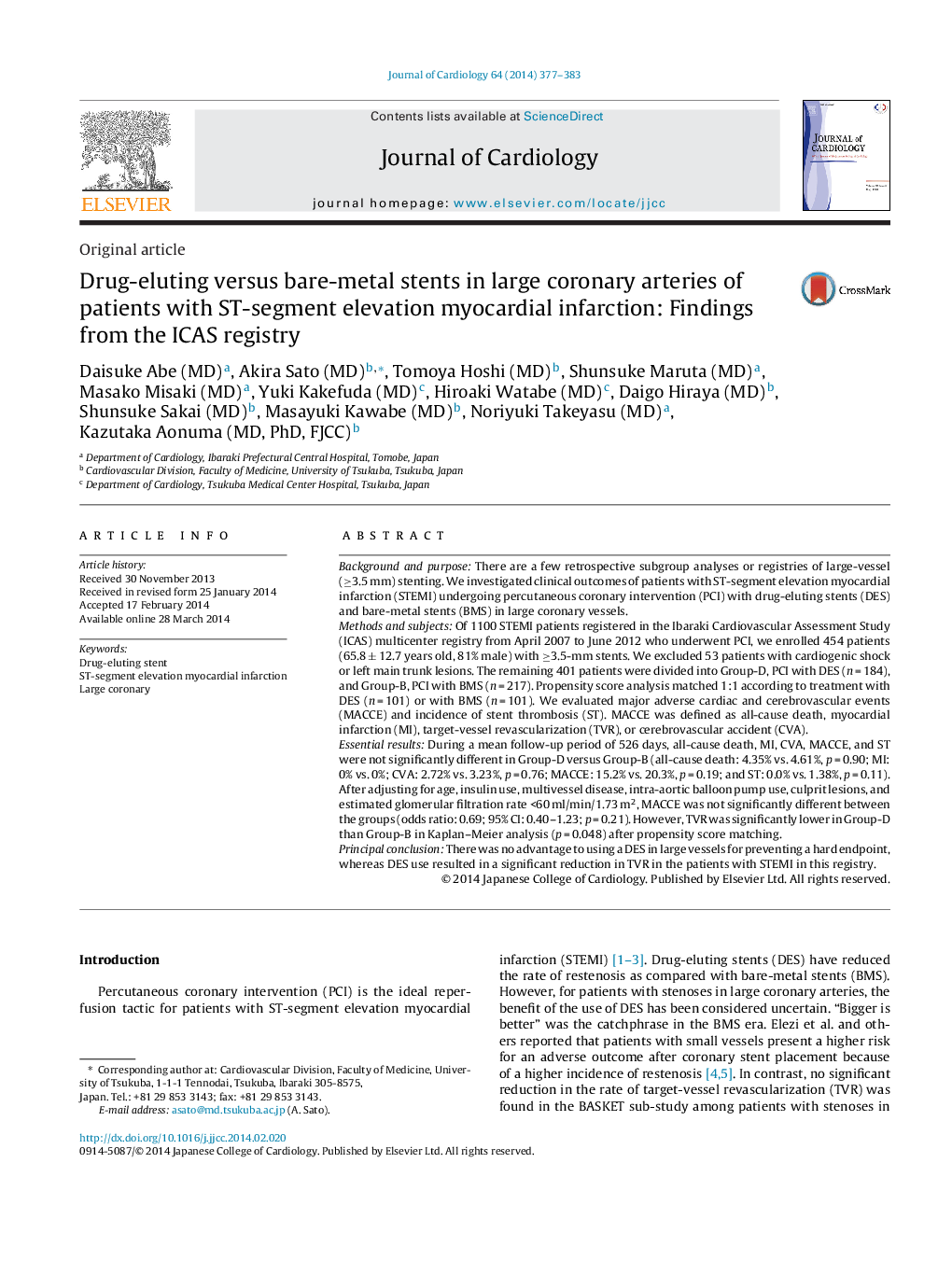| Article ID | Journal | Published Year | Pages | File Type |
|---|---|---|---|---|
| 2963010 | Journal of Cardiology | 2014 | 7 Pages |
Background and purposeThere are a few retrospective subgroup analyses or registries of large-vessel (≥3.5 mm) stenting. We investigated clinical outcomes of patients with ST-segment elevation myocardial infarction (STEMI) undergoing percutaneous coronary intervention (PCI) with drug-eluting stents (DES) and bare-metal stents (BMS) in large coronary vessels.Methods and subjectsOf 1100 STEMI patients registered in the Ibaraki Cardiovascular Assessment Study (ICAS) multicenter registry from April 2007 to June 2012 who underwent PCI, we enrolled 454 patients (65.8 ± 12.7 years old, 81% male) with ≥3.5-mm stents. We excluded 53 patients with cardiogenic shock or left main trunk lesions. The remaining 401 patients were divided into Group-D, PCI with DES (n = 184), and Group-B, PCI with BMS (n = 217). Propensity score analysis matched 1:1 according to treatment with DES (n = 101) or with BMS (n = 101). We evaluated major adverse cardiac and cerebrovascular events (MACCE) and incidence of stent thrombosis (ST). MACCE was defined as all-cause death, myocardial infarction (MI), target-vessel revascularization (TVR), or cerebrovascular accident (CVA).Essential resultsDuring a mean follow-up period of 526 days, all-cause death, MI, CVA, MACCE, and ST were not significantly different in Group-D versus Group-B (all-cause death: 4.35% vs. 4.61%, p = 0.90; MI: 0% vs. 0%; CVA: 2.72% vs. 3.23%, p = 0.76; MACCE: 15.2% vs. 20.3%, p = 0.19; and ST: 0.0% vs. 1.38%, p = 0.11). After adjusting for age, insulin use, multivessel disease, intra-aortic balloon pump use, culprit lesions, and estimated glomerular filtration rate <60 ml/min/1.73 m2, MACCE was not significantly different between the groups (odds ratio: 0.69; 95% CI: 0.40–1.23; p = 0.21). However, TVR was significantly lower in Group-D than Group-B in Kaplan–Meier analysis (p = 0.048) after propensity score matching.Principal conclusionThere was no advantage to using a DES in large vessels for preventing a hard endpoint, whereas DES use resulted in a significant reduction in TVR in the patients with STEMI in this registry.
